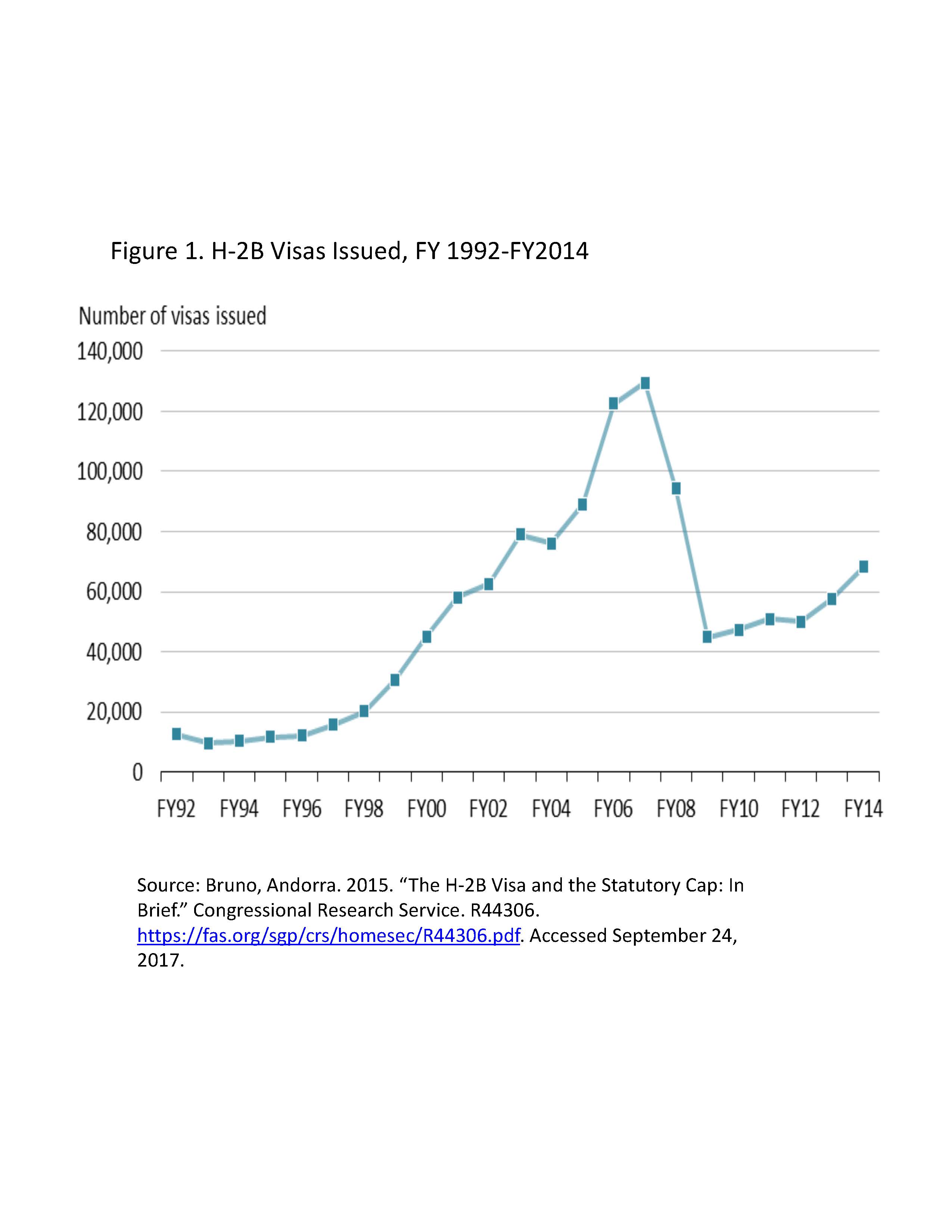Many non-agricultural industries rely on the H-2B program to employ foreign guest workers for temporary jobs. Occupations that employ the highest shares of H-2B workers include landscaping and groundskeeping; forest and conservation workers; amusement and recreation attendants; maids and housekeeping cleaners; meat, poultry, and fish cutters and trimmers; and construction laborers. The number of H-2B visas permitted in any fiscal year is capped at 66,000 (33,000 visas may be issued for the first half of the fiscal year and 33,000 for the second half plus any additional visas that were not used in the first half). This cap does not apply to H-2B workers that extend their stay, change employers, or change the terms and conditions for their employment. In Fiscal Years 2015-2016, the cap also did not apply to return guest workers that worked under an H-2B visa in at least one of the prior three years, but as of FY 2017 return guest workers are now included under the cap. Likely as a consequence of this policy change, FY2017 H-2B visas reached their caps for the first and second halves of the year about 2 months earlier than they did in the previous year.
The Department of Homeland Security and Labor increased the cap on H-2B visas by up to 15,000 workers this summer for employers that could demonstrate that they would likely suffer irreparable harm if they were not permitted to employ all of the H-2B workers that they requested. This was a one-time increase in H-2B permits. The demand for H-2B workers plummeted during the Great Recession of 2008, and the cap was not binding for several years (see Figure 1). Nevertheless, demand for non-agricultural guest workers has been trending upwards the past several years. If this trend continues, employers that demand temporary work will likely have to seek alternative sources of labor or reduce production. Employers of H-2B workers often say that they would prefer to hire U.S. workers since the H-2B program is difficult and cumbersome, but they are unable to find U.S. workers to work these seasonal jobs.

Labor shortages in these industries are expected to affect upstream and downstream markets as well. If the cost of production for meat processors increases, they will likely pass some of their losses to consumers and producers further up the supply chain. If H-2B caps become more restrictive, we may see industries substitute capital for foreign guest workers, reduce production and demand for inputs to production, and increase prices in the output market.
Additional Sources:
Bruno, Andorra. 2015. “The H-2B Visa and the Statutory Cap: In Brief.” Congressional Research Service. R44306. https://fas.org/sgp/crs/homesec/R44306.pdf. Accessed September 24, 2017.
Maurer, Roy. “H-2B Visa Applications Far Surpass Annual Cap.” Society for Human Resource Management. https://www.shrm.org/resourcesandtools/hr-topics/talent-acquisition/pages/h2b-visa-applications-annual-cap.aspx Accessed 9/24/2017.
U.S. Citizen and Immigration Services. “H-2B Temporary Non-Agricultural Workers.” https://www.uscis.gov/working-united-states/temporary-workers/h-2b-temporary-non-agricultural-workers. Accessed 9/24/2017.
(Photo by Abby Lanes is licensed under CC BY 4.0)
(Photo by kohlmann.sascha is licensed under CC BY 4.0)

